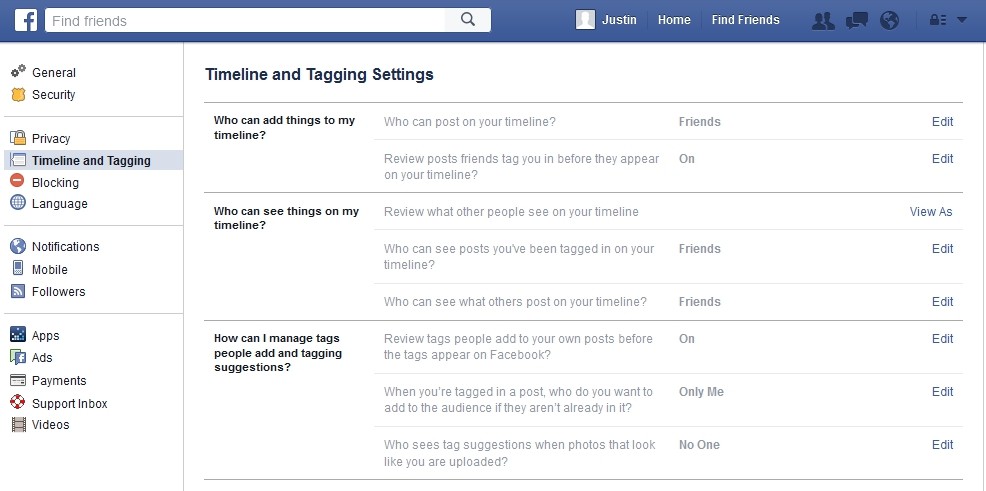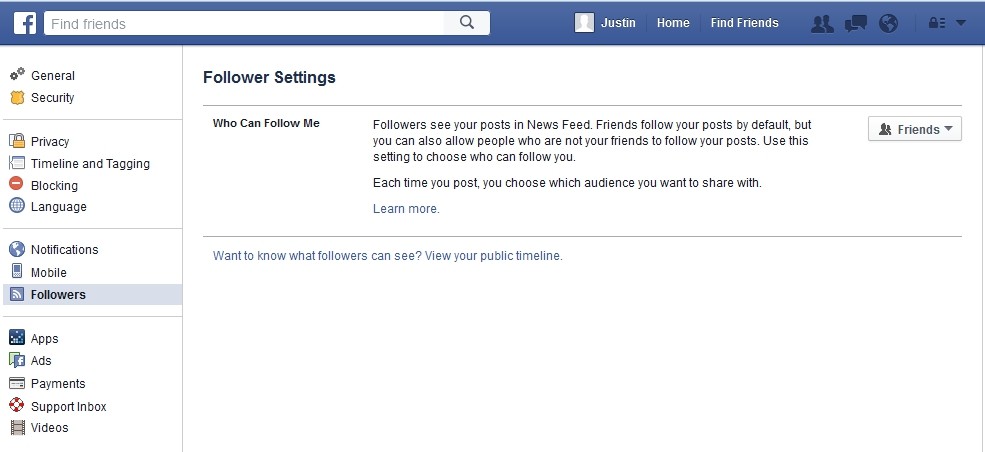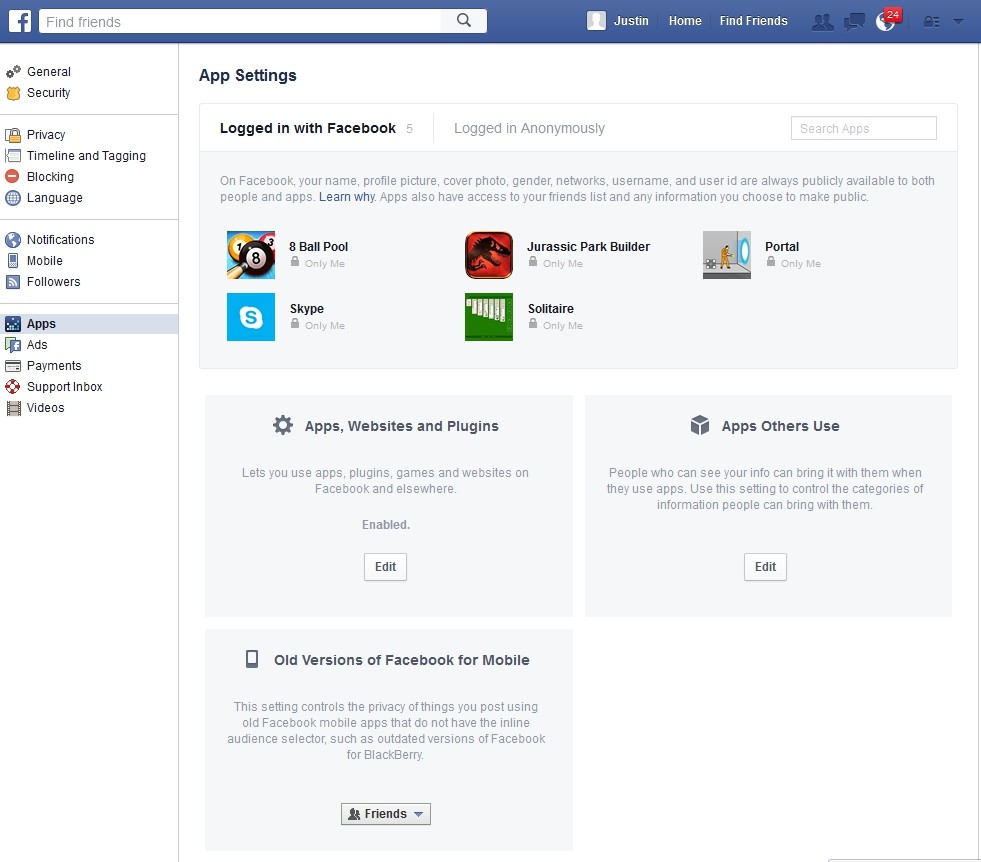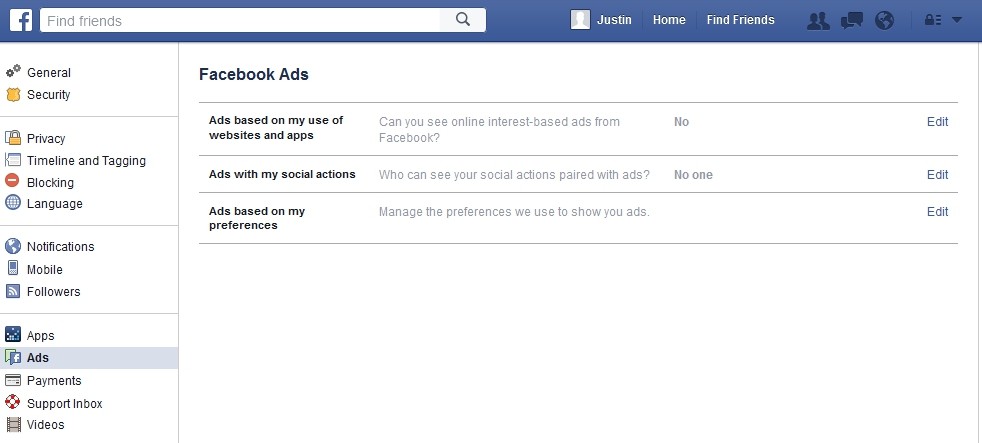It's a well-known fact that having a Facebook account isn't great for your privacy. If you aren't careful, you could post the wrong thing to the world and get in trouble at work, school, with family or even the law.
If that wasn't bad enough, hackers and identity thieves are also watching your account to pick up tidbits they can use against you. Burglars even use Facebook to pick targets to rob; make sure you know how to stay off their list. So, it should come as no surprise when we say that having the right Facebook privacy settings is critical. But there are a lot of settings so it's easy to miss some.
Facebook has helped the situation somewhat with its Privacy Checkup feature, aka the blue dinosaur. Simply log in to your account and click the padlock icon in the upper-right corner.
That's why we're going to walk you through Facebook's privacy options and tell you which ones you definitely want to change. Even if you think you already have them set correctly, Facebook changes its settings and where they're located frequently so you should double-check.
To get started, log into your Facebook account. Then click the downward arrow in the upper-right corner and choose Settings.
General
You'll start on the General settings page. This is where you adjust your name, username, email, password, networks and temperature units.Security
Move to the Security tab by clicking the Security link in the left column. The Security tab is where you set up login security, choose trusted contacts and browsers, manage your sessions and deactivate your account."Login Approvals" means you can only log in on a new computer or gadget if you have your phone with you to receive a special code. Even if a hacker gets your information, they'd need your phone as well to get in to your account.
It's a little annoying at times, but the extra security is worth it. And you can set up trusted browsers and gadgets that don't require the extra security. You'll only see it if you try to log in from an unfamiliar gadget.
If you worried about being locked out of your account, you can set up "Trusted Contacts." These are friends who can help you get back in if you're locked out, either unintentionally or by a hacker.
Review your "Your Browsers and Apps." You might have logged in on a computer in the past, such as one belonging to a friend or ex, that you no longer want to have easy access. You can take it off the list so it requires a login approval for future access.
Similarly, check "Where You're Logged In" to make sure you didn't leave a computer or gadget logged in somewhere that you didn't mean to, such as a library computer, or that someone isn't logged in without your knowledge.
This is also the area you can set up a "Legacy Contact," which is someone who can take over your account in the event something happens to you.
Privacy
The Privacy tab controls who can see what you post and who can contact and find you. If you only change the settings in one place, this should be it (but you really should change all the settings we're mentioning here).From here you can also access the Activity Log. This lets you review old posts, photos and more in your timeline to get rid of things you don't want people to see anymore. Learn more about using the Activity Log to protect your privacy.
In the "Who can contact me?" section, change "Who can send you friend requests?" to "Friends of Friends." This keeps strangers from sending you friend invites you don't want. The exception is if you want old friends from school to be able to send you friend requests.
Under "Who can look me up?" you want to change the settings to "Friends," "Friends" and "No." This makes it much harder for strangers or stalkers to find you if they just have a phone number, email address or know your name. Keep in mind, this will also stop old friends from easily finding you.
Timeline and Tagging
We've already limited who can see your posts, but the Timeline and Tagging tab has a few privacy loopholes you need to close.Also, be sure to set "Review posts..." to "On." That way if a friend mentions you in a post you don't necessarily agree with or would make you look bad to your friends, you can stop it before it appears.
In "Who can see things on my timeline?" you can leave "Who can see posts you've been tagged in..." to "Friends of Friends," since they'll be able to see the post on your friend's timeline anyway. If you want to be extra cautious though, set it to "Friends." You do, however, want "Who can see what others post on your timeline?" set to "Friends."
Blocking
Facebook is great for staying in touch with people, but some people you don't want in your life. That's where Facebook's blocking feature comes in handy.If you want to see who you're already blocking, next to "Restricted List" click "Edit List." From there you can unblock people you might have blocked in the past.
Jumping ahead
We're going to jump over "Language," which lets you set the language Facebook appears in; "Notifications," which lets you control how often Facebook bugs you in your email, text messages and elsewhere; and "Mobile," which gives you control over which cellphones are linked with Facebook and how often it can bug you. These aren't really areas of security or privacy concern, but we do encourage you to check those out on your own because they can make Facebook less annoying.Speaking of which, learn about three major Facebook annoyances and how you can stop them with a few clicks.
Followers
You can allow people who aren't your friends to see your posts in their News Feed. This is handy if you're an aspiring writer or artists looking to get a wider audience. But for most people, you want to make sure "Who Can Follow Me" is set to "Friends."Apps
The Apps settings involve more than just controlling what Facebook apps you have linked to your account. It has a few settings that are serious privacy problems if they aren't changed.If you're short on time, however, under "Apps, Websites and Plugins" click the "Edit" button. Then choose the "Disable Platform" link in the bottom left corner. This will completely turn off apps, and stop app developers from collecting information about you.
You'll also want to click the "Edit" button under "Apps Others Use" and uncheck every option. This will stop your friends' apps from sharing your information with app developers.
Ads
The Ads section controls how Facebook can use your information in ads, and if Facebook will show you targeted ads on other sites.Set "Ads based on my use of websites and apps" to "No" to stop other sites from sharing your interests with Facebook so it can show you targeted ads. If you want to stop these other sites from sharing this information with each other, click here.
Set "Ads with my social actions" to "No one," or your friends could start seeing your name attached to ads.
Finally, even though Facebook won't be getting information from other sources, it still uses your likes and what you post to target you with ads. Go under "Ads based on my preferences" to control what Facebook thinks it knows about you.
Wrapping up
There are a few more sections of Facebook's Settings, but outside of "Payments" these don't have anything to do with security or privacy. Just pop into the "Payments" section to make sure you didn't add a credit card to Facebook at some point in the past. If so, you can remove it.Privacy and security are well and good, but Facebook can just be downright annoying sometimes. Learn about one change you can make to your News Feed today that will make it much nicer to use.





























